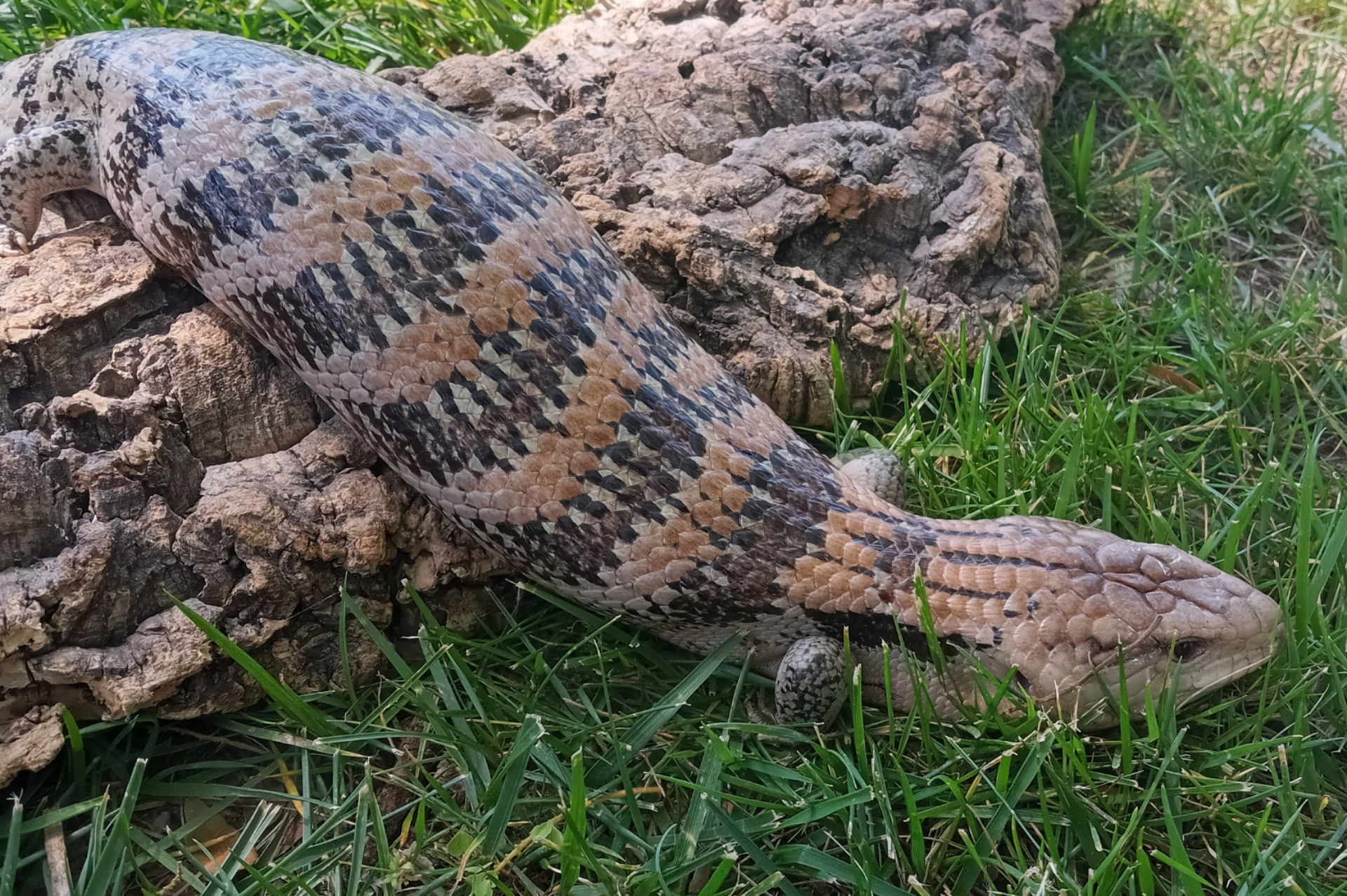Blue Tongued Skink

Basic Information:
Scientific Name: Tiliqua gigas
Habitat: The blue-tongued skink can be found in the coastal and montane woodlands and forests of Papua New Guinea and Australia’s interior.
Diet: Blue-tongued skinks are omnivores and eat a variety of plants and animals including insects, snails, flowers, fruits, and berries.
Size: 1.5 to 2.5 feet long
Weight: 0.6 to 1.1 pounds
Lifespan: 15 to 20 years in the wild. Up to 30 years in human care.
Distribution Map:
I.U.C.N. Conservation Status:

What does this mean?
Least Concern – a species determined by the International Union for Conservation of Nature (I.U.C.N.) to be pervasive, abundant, and thriving.
Our Blue Tongued Skink:
Winston – Estimated Date of Birth Between 1992 & 1998
About Blue Tongued Skinks:
Skinks are one of the most diverse groups of lizards in the world. Typically, though, a skink is distinguishable by their long bodies and short legs that have earned them the nickname “snake with legs.” The specific breed of skink known as the blue tongued skink is unique due to their characteristic blue tongue. They are found primarily on mainland Australia where they forage for food throughout the day. While they are generally non-aggressive, then they feel threatened they will puff their body and hiss. And if that doesn’t dissuade the threat, the skinks will shoot out their tongue as a quick surprise. While their tongue doesn’t do anything in and of itself, the blue color reflects UV light in a more powerful way which will startle potential predators. And since most of a blue-tongued skink’s predators are birds, a well-timed tongue display can throw a diving bird-of-prey off enough to veer them away from snatching the skink up for their next meal.
Did You Know?!
- Blue tongued skinks are a diurnal, ground-dwelling lizard.
- When a predator threatens a blue tongued skink, the lizard puffs up its body to look bigger. At the same time, it opens its mouth and hisses while sticking out its bright blue tongue.
- Unlike most lizards, blue tongued skinks do not walk on their feet. Instead, they slither on their bellies (similar to how snakes move) and use their feet to push themselves along.
- Blue tongue skinks are docile creature, both shy and secretive, and they don’t often stray from their shelters.
- Blue tongued skinks can drop their tails if necessary to escape a predator.
